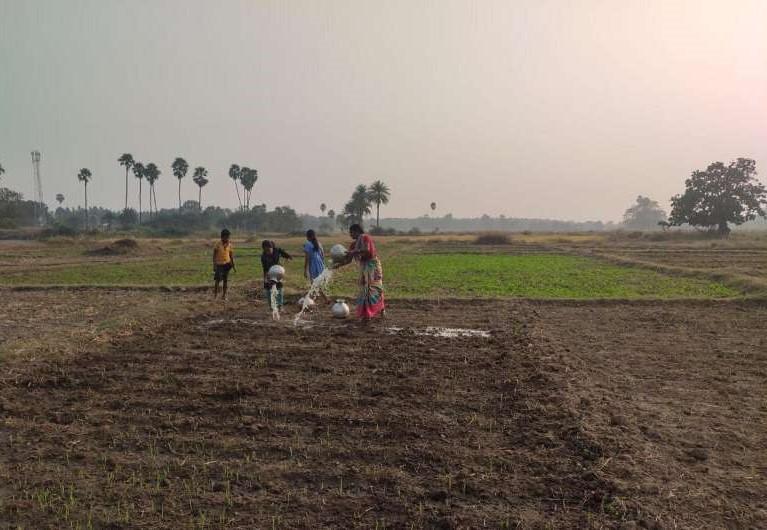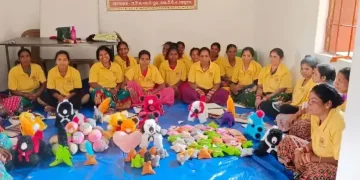New Delhi
Amidst climate change-induced global food crisis and soaring food prices, home gardens —producing millet, pulses, fresh fruits and vegetables — could be a strategy to enhance household food security, nutrition and economic growth for vulnerable groups like tribals, an international team of researchers has reasoned.
Economics researchers from the Alliance of Bioversity International and The International Center for Tropical Agriculture (CIAT) reached at this conclusion after studying about 1,900 households within the tribal communities in Odisha.
They evidenced that home gardens can improve food security, dietary quality, and income in these rural farming communities.
The study, “Home gardens, household nutrition and income in rural farm households in Odisha, India,” was recently published in the Journal of Agricultural Economics.
The project in Odisha was part of the Government of India’s program that aims to reach over 27,300 beneficiaries with home garden interventions to help increase their production and consumption of highly nutritious home-produced foods, and ultimately improve their food and nutrition security by improving the quality of their diet.
Sylvester Ogutu, a researcher for the Alliance of Bioversity International and CIAT and the paper’s lead author, said that having a home garden increased annual home-produced food by nearly 90 percent.

“Our findings also suggest that home gardens can be a poverty-reducing strategy for resource-poor farmers and vulnerable population groups,” Ogutu said, adding the monthly value of home-produced and consumed food per adult rose by over half, increasing the probability of greater food security among adopters of home gardens.
“Having a home garden also increased monthly per adult equivalent incomes by 37% and reduced the prevalence of poverty by 11.7 percentage points,” he pointed out.
Jonathan Mockshell, an agricultural economist at the Alliance of Bioversity International and CIAT, study lead, and the co-author of the paper, said that programs aimed at teaching vulnerable population groups how to start or improve home gardens started in Odisha in 2017 and are ramping up, with three quarters of the home garden interventions completed between 2020 and 2021.
“Home gardens can also complement government programs, such as the National Nutrition Mission, to improve nutrition and also contribute toward achievement of the Sustainable Development Goals, especially those related to poverty, zero hunger, and good health and well-being,” Mockshell said.
For his part, James Garrett, a co-author, said: “Promotion of home gardens in India can help curb widespread malnutrition problems, such as anemia in women, by improving the quality of diets that are typically less diverse, dominated by cereals, and/or characterized by low intakes of fruits and vegetables.”
The initiative is being implemented by Vigyan Prasar and supported by Science for Equity, Empowerment & Development (SEED) Division of Department of Science & Technology, Government of India. It aims to present an easy-to-use information resource on locally adaptable tools and techniques for tribal women based in Jharkhand, Bihar, Odisha, and West Bengal to optimise production and enhance livelihood options.
All About Home Garden
- Globally, home gardens have been documented as one related to food production on small plots, adjacent to human settlements, contributing to food and nutritional security and livelihoods.
- Literature wise, home gardens are classified as mixed, kitchen, backyard, farmyard, compound or homestead garden. Besides India, it’s in Sri Lanka that home gardening has been practiced for centuries.
- The home garden model was first prepared on a scientific basis in India by Krishi Vigyan Kendra, Ranchi to provide a nutritive and diversified diet to tribal communities having small parcels of land i.e. about 6×6 m2 area, which is normally available with every household in rural areas.
- Seasonal vegetables including leafy ones, cucurbits, leguminous vegetables and root vegetables are grown in this garden after preparation of land. A minimum of 10 types of vegetables is grown in each season so that vegetables are available for consumption throughout the year.
- The model was demonstrated among more than 150 tribal farmers of Ranchi district. Women farmers replicated it in more areas, indicating that the model is successful, socially acceptable, environment-friendly and viable in tribal areas. The garden is managed by household members using only organic manures and pesticides.
- Fruit plants may be planted on the boundary in a direction, which doesn’t prevent sunlight from coming. This garden can produce about 350 Kg of vegetables annually, which is sufficient to meet the minimum needs of nutrients for a small family having four members.
- The home gardening project is now being implemented by Vigyan Prasar and supported by the Science for Equity, Empowerment & Development (SEED) Division of Department of Science & Technology, Government of India. The initiative has been well adopted by the
tribal women of Jharkhand, Bihar, Odisha, and West Bengal.























